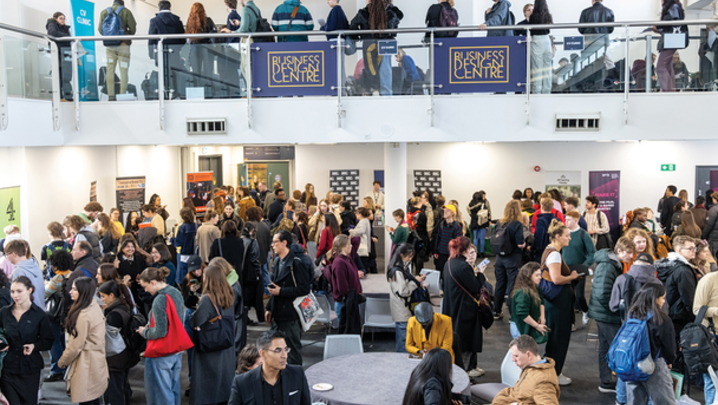Online food channels are inspiring millennials to hone their culinary skills. Pippa Shawley logs on to Food Tube and beyond
Take a loaf of bread, hollow out the centre, place a Camembert in the hole and bake for 15 minutes. It’s not the most original recipe, admittedly, but Proper Tasty’s 35-second instructional video has clocked up nearly 40 million views since it was uploaded to Facebook in late December.
Proper Tasty, the British spin-off of BuzzFeed’s original Tasty page, launched in December 2015 and is part of a growing movement of online channels offering cooking inspiration.
If you’re on Facebook, it’s hard to have missed Proper Tasty’s eye-catching posts. Each video, rarely over a minute long, offers brief instructions for creating dishes including Yorkshire pudding profiteroles, mojito-marinated chicken and mince-pie doughnuts.
“It’s just been phenomenal,” says Ailbhe Malone, Head of Life at BuzzFeed UK, of the reaction to the videos, which gained 1 billion views in the first three months.
The Camembert Bread Bowl is just one of more than 80 videos created by Proper Tasty’s two-person production team since it launched.
Malone believes the success of the videos is down to the “hyper-focused” content aimed at British audiences. What’s more, videos on Facebook play automatically, making them easy to engage with.
The reaction to the recipes is typified by a string of comments beneath each post of people referring it to friends, as well as the use of Facebook’s share button. “It’s got this inherent shareability,” agrees Malone. She believes that experimentation and reviewing audience feedback has been key to the page’s rapid growth.
BuzzFeed is the latest brand to target millennials with an interest in food. Jamie Oliver created Food Tube, an online arena for sharing cooking tips and recipes.
A live Twittercast to promote Oliver’s Food Revolution in 2010 made the chef curious about the possibilities of communicating directly with audiences. Consequently, the chef overhauled his YouTube channel. Until then, it had been a holding pen for videos on JamieOliver.com and promotional clips for his TV shows.
As part of YouTube’s original-content partnership scheme, Oliver and his production company, Fresh One, pitched the idea for a cooking channel featuring the chef and new talent.
Fast-forward three years, and today Food Tube is one of the most-watched culinary channels on the web. “We did make a few mistakes in those early days,” recalls Richard Herd, Food Tube Network Manager at Fresh One.
Originally, the team produced content in a similar way to Oliver’s TV shows, believing that the YouTube audience would just want the same kind of recipe segments, but faster.
“They didn’t,” admits Herd. “They wanted something else, and they told us so in the first few videos. They saw Jamie moving online as a TV person coming into their space.”
"It should always be something that inspires you to share with friends and go, 'Oh, maybe I'll [try that]'"
While internet criticism can be particularly cruel, the immediate feedback available through YouTube and social media allowed the Food Tube team to see what needed adapting. “It was changing the grammar of how we present to them: it was much more direct, it was much more down-the-lens, it was much more conversational,” says Herd. “It was a bit rough around the edges, which suited us, because we were trying to make things cheaper and faster.… It gave Jamie even more of that freedom to do what he wanted to do.”
Today, the channel has more than 2.2 million subscribers and the videos have been viewed more than 200 million times. Cannily, Oliver has introduced, and collaborated with, upcoming cooks and vloggers, including online nutrition trainer Joe Wicks (alias The Body Coach).
The approach has attracted a younger, male-skewed audience. According to Herd, Food Tube’s core audience is 65% male, aged 20-40. That contrasts with the audience for Jamie Oliver’s main brand, which is aged between 25 and 45, and 65% female.
This 20-40 age group is one that the team behind SortedFood knew well when they founded their YouTube channel while still at university.
“We started writing recipes on the back of beer mats and we wanted to share these with more people,” recalls Jamie Spafford, one of four school friends who would gather in the pub during university holidays to moan about how badly they were eating.
“One of the obvious places for us at the time was YouTube, so we started filming ourselves making these recipes to share with our wider friendship group,” he adds.
Since then, the channel has gained over 1.5 million subscribers; its videos have been viewed more than 189 million times. While the team has increased to 14, Spafford says that they are not looking to hire any more people.
“For us, it’s about keeping it as a really close-knit and tight team. We very much built it up around friends and family,” he explains.
"Our best performing video on all the channels is How to Poach an Egg With Jamie Oliver."
Now a multimillion-pound business, the group has diversified into cookbooks. “It was fantastic, but probably a little bit too early for us – I’m not sure we really had the scale of audience that we wanted,” admits Spafford of the book released by Penguin in 2012. The group has also collaborated with brands, and two years ago it launched an app.
“The thinking behind the app was to create a platform where people could upload their own recipes, their own tips and tricks.… To be able to showcase their stories and their recipes has been amazing.” It’s clear that such collaboration and flexibility is vital to succeed in the online food landscape.
Choosing what content to watch online can be time consuming and the more a channel can listen to its audience, the better. “You’re borrow-ing someone’s precious time for that moment,” explains Richard Herd. “There has to be a reason that they watch you rather than the 1,000 other things that are blinking on the right-hand side.
“TV’s much more passive… you might move from one programme to the next without getting up from the sofa. [Online], if you don’t like something, you turn it off and you find something else because there’s another thing that’s flashing at you.”
As for the content itself, simplicity is what excels online.
“It should always be approachable,” advises Ailbhe Malone. “It should always be something that inspires you to share with friends and go, ‘Oh, maybe I’ll put that in the slow cooker and have it for tea tomorrow night’.”
Avoiding “cheffy” food (emulsions, foams, liquid nitrogen), as Malone puts it, is something that even Jamie Oliver’s camp agrees with.
“Our best-performing video on all the channels is How to Poach an Egg With Jamie Oliver,” says Herd. “It’s something that people search for all the time.… When you see a big list of ‘how to poach an egg’ videos, you’re more than likely going to go to a name that you trust rather than somebody else.”
While audiences will continue to watch the likes of Oliver on television and online, traditional programme-makers are bound to view the popular online videos, produced on significantly smaller budgets, with envy.
While last year’s Great British Bake Off finale delighted an audience of 13.4 million, Proper Tasty’s most-watched video – for homemade Ferrero Roche-inspired balls – has already been watched over 44 million times.
Each day seems to bring another voice to online food programming. Brands such as Sainsbury’s and Hellmann’s have adopted Proper Tasty’s style of snappy, inspiration-heavy videos, and publishers such as Vice’s Munchies have invested time and money in producing longer-form food films.
It seems that the appetite for creating shareable culinary content shows no signs of slowing.







